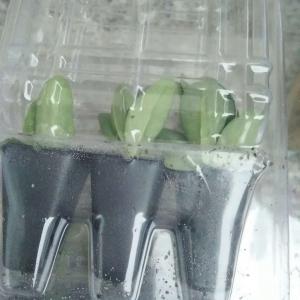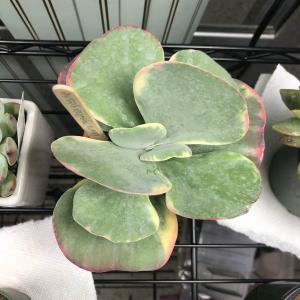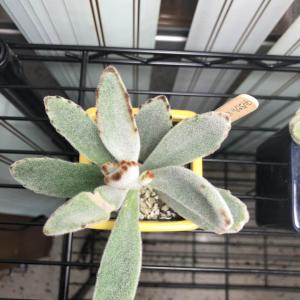文章
Miss Chen
2018年05月11日

Description: This perennial wildflower consists of a rosette of basal leaves during the spring that spans about 6-12" across. The blades of the basal leaves are up to 8" long and 6" across; they are cordate to oval-cordate in shape and crenate-serrate along their margins. The upper surface of these blades is medium green and hairless to short-hairy, while the lower surface is pale green and hairy along the major veins. The petioles of the basal leaves are up to 6" long, light green, and usually hairy. During the summer, unbranched or sparingly branched stems with alternate leaves are produced, while the basal leaves wither away. These stems are light green to pale reddish green, terete, and variably hairy: usually the lower stems are hairless, while the upper stems are short-hairy. The blades of alternate leaves are up to 4" long and 3" across; they are mostly cordate with margins that are serrate or crenate-serrate. Some of the upper leaf blades may be ovate in shape. The upper surface of these blades is medium green and hairless to short-hairy, while the lower surface is pale green and hairy along the major veins. The petioles of the alternate leaves are up to 3" long and they are often winged, particularly where the petioles join the stem.
The upper central stem of each plant (and any upper lateral stems) terminates in a flat-headed panicle (corymb) of flowerheads spanning 3-8" across. Individual flowerheads are ½-1¼" across, consisting of 8-20 ray florets that surround numerous disk florets. The petal-like corollas of the ray florets are lavender or white. The tubular corollas of the disk florets are initially pale yellow or yellow, but they later become orange-red, dark red, or brown. The tubular corolla of each disk floret has 5 slightly spreading lobes at its apex. At the base of each flowerhead, there are numerous floral bracts (phyllaries) that are arranged in 4-6 series; they are appressed and overlapping. Individual floral bracts are more or less oblong in shape and mostly green, except for the narrow white margins along their sides; they are short-pubescent and occasionally ciliate along their margins. The tips of these bracts are usually blunt; less often, they are somewhat pointed. The peduncles and pedicels of the panicle are light green, relatively stout, and covered with short glandular hairs. At the base of each branch of the panicle, there is usually a single leafy bract up to 1½" long that is broadly oblong or broadly elliptic; these bracts are sessile.

The blooming period occurs from late summer to early fall and lasts about 1-1½ months. During the autumn, both ray and disk florets are replaced by small bullet-shaped achenes; each achene has a tuft of tawny hairs at its apex. The achenes are distributed by the wind. The root system is fibrous and long-rhizomatous; on older plants, a small caudex sometimes develops. This wildflower often forms clonal colonies by means of the spreading rhizomes.
Cultivation: The preference is partial sun to medium shade, moist to dry-mesic conditions, and soil consisting of rich loam or sandy loam.
Distribution MapRange & Habitat: The native Big-Leaved Aster is found only in the northeast section of Illinois, where it is rare. This species is more common in areas that lie to the north or east of the state. Habitats consist of beech-maple woodlands, sandy oak woodlands, sandy oak savannas, elevated areas (hummocks) in swamps, stabilized sand dunes where oak trees are dominant, and woodland borders. Usually, Big-Leaved Aster occupies high-quality natural areas that are more or less mesic (neither too dry nor too wet) and relatively little-disturbed by human activities.
Faunal Associations: The nectar and pollen of the flowers attract a large variety of insects, including long-tongued bees, short-tongued bees, wasps, flies, butterflies, beetles, and plant bugs. An oligolectic Andrenid bee, Andrena hirticincta, has been observed visiting the flowerheads of Big-Leaved Aster (see Graenicher). Other insects feed on the foliage and flowers, suck plant juices, or bore through the stems and roots of this aster and others. Examples of such insect feeders include caterpillars of the butterflies Chlosyne nycteis (Silvery Checkerspot) and Phyciodes tharos (Pearl Crescent); also the caterpillars of Carmenta corni (Aster Borer Moth), Cucullia asteroides (The Asteroid), Schinia arcigera (Arcigera Flower Moth), and other moths feed on asters (see Moth Table). Other insects feeders include the larvae of Calycomyza humeralis (Aster Leafminer Fly), several aphids (mostly Uroleucon spp.), Macrosteles quadrilineatus (Aster Leafhopper), the lace bugs Corythucha marmorata and Galeata spinifrons, the leaf beetles Exema canadensis and Ophraella pilosa, the plant bug Plagiognathus cuneatus, and others (see Insect Table for a more complete listing of species). Some vertebrate animals use asters as a food source. The Ruffed Grouse and Wild Turkey eat the seeds and foliage, while the White-Tailed Deer and Cottontail Rabbit sometimes browse on the foliage. The foliage is also edible to cattle, sheep, and other domesticated farm animals.
Photographic Location: The photograph of the basal leaves was taken at a deciduous woodland in NW Ohio, while the photographs of the flowerheads were taken at a woodland border and a sandy oak savanna in the Indiana Dunes State Park, NW Indiana.

Comments: Sometimes Big-Leaved Aster is referred to as Aster macrophyllus. The large basal leaves of this aster are very conspicuous during the spring. During the autumn, Big-Leaved Aster resembles many other woodland asters and it is more difficult to identify. However, it can be distinguished from similar species by the appearance of its floral bracts (phyllaries), the presence of short glandular hairs on its peduncles and pedicels (a 10x hand lens may be required), and the flat-headed characteristic of its panicles. Most asters have elongated panicles of flowerheads that are not flat-headed. A species that is not found in Illinois, Eurybia divaricata (White Wood Aster), shares this flat-headed characteristic with Big-Leaved Aster and its leaves have a similar shape. However, White Wood Aster has flowerheads with fewer ray florets (about 5-10), its peduncles and pedicels usually have non-glandular hairs, and its basal leaves are smaller in size.
The upper central stem of each plant (and any upper lateral stems) terminates in a flat-headed panicle (corymb) of flowerheads spanning 3-8" across. Individual flowerheads are ½-1¼" across, consisting of 8-20 ray florets that surround numerous disk florets. The petal-like corollas of the ray florets are lavender or white. The tubular corollas of the disk florets are initially pale yellow or yellow, but they later become orange-red, dark red, or brown. The tubular corolla of each disk floret has 5 slightly spreading lobes at its apex. At the base of each flowerhead, there are numerous floral bracts (phyllaries) that are arranged in 4-6 series; they are appressed and overlapping. Individual floral bracts are more or less oblong in shape and mostly green, except for the narrow white margins along their sides; they are short-pubescent and occasionally ciliate along their margins. The tips of these bracts are usually blunt; less often, they are somewhat pointed. The peduncles and pedicels of the panicle are light green, relatively stout, and covered with short glandular hairs. At the base of each branch of the panicle, there is usually a single leafy bract up to 1½" long that is broadly oblong or broadly elliptic; these bracts are sessile.

The blooming period occurs from late summer to early fall and lasts about 1-1½ months. During the autumn, both ray and disk florets are replaced by small bullet-shaped achenes; each achene has a tuft of tawny hairs at its apex. The achenes are distributed by the wind. The root system is fibrous and long-rhizomatous; on older plants, a small caudex sometimes develops. This wildflower often forms clonal colonies by means of the spreading rhizomes.
Cultivation: The preference is partial sun to medium shade, moist to dry-mesic conditions, and soil consisting of rich loam or sandy loam.
Distribution MapRange & Habitat: The native Big-Leaved Aster is found only in the northeast section of Illinois, where it is rare. This species is more common in areas that lie to the north or east of the state. Habitats consist of beech-maple woodlands, sandy oak woodlands, sandy oak savannas, elevated areas (hummocks) in swamps, stabilized sand dunes where oak trees are dominant, and woodland borders. Usually, Big-Leaved Aster occupies high-quality natural areas that are more or less mesic (neither too dry nor too wet) and relatively little-disturbed by human activities.
Faunal Associations: The nectar and pollen of the flowers attract a large variety of insects, including long-tongued bees, short-tongued bees, wasps, flies, butterflies, beetles, and plant bugs. An oligolectic Andrenid bee, Andrena hirticincta, has been observed visiting the flowerheads of Big-Leaved Aster (see Graenicher). Other insects feed on the foliage and flowers, suck plant juices, or bore through the stems and roots of this aster and others. Examples of such insect feeders include caterpillars of the butterflies Chlosyne nycteis (Silvery Checkerspot) and Phyciodes tharos (Pearl Crescent); also the caterpillars of Carmenta corni (Aster Borer Moth), Cucullia asteroides (The Asteroid), Schinia arcigera (Arcigera Flower Moth), and other moths feed on asters (see Moth Table). Other insects feeders include the larvae of Calycomyza humeralis (Aster Leafminer Fly), several aphids (mostly Uroleucon spp.), Macrosteles quadrilineatus (Aster Leafhopper), the lace bugs Corythucha marmorata and Galeata spinifrons, the leaf beetles Exema canadensis and Ophraella pilosa, the plant bug Plagiognathus cuneatus, and others (see Insect Table for a more complete listing of species). Some vertebrate animals use asters as a food source. The Ruffed Grouse and Wild Turkey eat the seeds and foliage, while the White-Tailed Deer and Cottontail Rabbit sometimes browse on the foliage. The foliage is also edible to cattle, sheep, and other domesticated farm animals.
Photographic Location: The photograph of the basal leaves was taken at a deciduous woodland in NW Ohio, while the photographs of the flowerheads were taken at a woodland border and a sandy oak savanna in the Indiana Dunes State Park, NW Indiana.

Comments: Sometimes Big-Leaved Aster is referred to as Aster macrophyllus. The large basal leaves of this aster are very conspicuous during the spring. During the autumn, Big-Leaved Aster resembles many other woodland asters and it is more difficult to identify. However, it can be distinguished from similar species by the appearance of its floral bracts (phyllaries), the presence of short glandular hairs on its peduncles and pedicels (a 10x hand lens may be required), and the flat-headed characteristic of its panicles. Most asters have elongated panicles of flowerheads that are not flat-headed. A species that is not found in Illinois, Eurybia divaricata (White Wood Aster), shares this flat-headed characteristic with Big-Leaved Aster and its leaves have a similar shape. However, White Wood Aster has flowerheads with fewer ray florets (about 5-10), its peduncles and pedicels usually have non-glandular hairs, and its basal leaves are smaller in size.
0
0
文章
Miss Chen
2018年05月09日

Description: This perennial wildflower consists of a short leafy stem (4-12" tall) and a flowering stalk (1½-3' long) that are separated from each other at the base. The leafy stem is erect, light green to reddish green, and short-pubescent; it has 1-2 pseudo-whorls of 3 compound leaves at its apex. The compound leaves are trifoliate with slender petioles about 2-3" long. Individual leaflets are 2-3½" long and 1½-2½" across; they are lanceolate-ovate to oval in shape and their margins are smooth. The upper surface of the leaflets is medium green and short-pubescent to glabrous, while their lower surface is pale green and glabrous. The terminal leaflet of each trifoliate leaf has a slender petiolule (basal stalklet) up to ¾" long, while the lateral leaflets have slender petiolules less than 1/8" long. The erect to ascending flowering stalk is light green to reddish green and short-pubescent; it is usually leafless, although a less common variety of Naked-Flowered Tick Trefoil has 1-2 trifoliate leaves. The upper part of the flowering stalk consists of a raceme or narrow panicle of flowers up to 1' long. The flowers are arranged along the stalk in widely spaced pseudo-whorls. The pedicels of the flowers and lateral branches (if any) are about ½-¾" long.
Individual flowers consist of 5 whitish pink or pale lavender petals, a short tubular calyx with blunt teeth that is greenish red to white, several stamens with white filaments, and a pistil with a single style. The corolla of each flower has a typical pea-like structure consisting of an erect banner, a straight horizontal keel, and a pair of spreading wings. The calyx is short-pubescent and its bottom tooth is larger in size than the others. The blooming period occurs from mid- to late summer for about 1 month. On each plant, only a few flowers are in bloom at the same time and they are not noticeably fragrant. The flowers are replaced by flattened seedpods called 'loments.' The loments usually have 2-3 one-seeded segments (less often, 1 or 4 segments); the upper side of each segment is straight or slightly concave, while the lower side is convex or rhombic. The lateral sides of each loment are covered with short hooked hairs; each loment has a long stipe (about ½" long) at its base and a shorter beak (less than ¼" long) at its tip. Each segment of the loment is about 8 mm. (1/3") long. The root system consists of a short broad taproot or caudex. This wildflower reproduces by reseeding itself.

Cultivation: The preference is light to medium shade, mesic conditions, and a slightly to moderately acidic soil containing sand, rocky material, or loam with decaying organic matter. The root system of this wildflower fixes nitrogen into the soil via symbiotic bacteria.
Range & Habitat: Naked-Flowered Tick Trefoil is occasional in central and southern Illinois, while in the northern section of the state it is uncommon (see Distribution Map); it is native. Habitats consist of mesic beech-maple woodlands, sandy oak woodlands, and rocky woodlands where sandstone is present. This wildflower occurs in higher quality woodlands where the native ground flora is intact.

Faunal Associations: The flowers are cross-pollinated by bumblebees, other long-tongued bees, and Halictid bees; these visitors collect pollen. Nectar is not available as a floral reward. Other insects feed on the foliage and other parts of Desmodium spp. (Tick Trefoils). These species include the caterpillars of several skippers, butterflies, and moths; the leaf-mining larvae of the Buprestid beetles Pachyschelus confusus and Pachyschelus laevigatus; the larvae of the seed weevil Apion decoloratum; the thrips Echinothrips americanus and Neohydatothrips desmodianus; and the aphid Microparsus variabilis. There are also several leaf beetles that feed on the foliage of tick trefoils: Anomoea laticlavia, Bassareus lituratus, Cerotoma trifurcata, Colaspis brunnea, Cryptocephalus insertus, Odontata dorsalis, Pachybrachis nigricornis, Pachybrachis othonus, Phyllecthris dorsalis, and Saxinis omogera. Some vertebrate animals also use these plants as a food source. The seeds are eaten by the Wild Turkey and Bobwhite, while the foliage is palatable to deer, rabbits, horses, cattle, and other mammalian herbivores. Because of the height of the flowering stalk (up to 3') and the habitat (woodlands), White-tailed Deer are probably the primary transporters of the seeds of Naked-Flowered Tick Trefoil as the loments (seedpods) can cling to fur.

Photographic Location: A sandy woodland at the Indiana Dunes National Lakeshore in NW Indiana.
Comments: Naked-Flowered Tick Trefoil is usually easy to identify because, unlike other Desmodium spp. (Tick Trefoils), it produces its leaves and flowers on separate stalks (except for an uncommon variety). While other species in this genus produce leaves that are clearly alternate, Naked-Flowered Tick Trefoil produces its leaves in pseudo-whorls. This species also has loments (a type of seedpod) with straight or slightly concave upper sides above their segments. In contrast, most species of tick trefoil have loments with convex upper sides above their segments. Naked-Flowered Tick Trefoil also prefers shady woodlands, while other species of tick trefoil usually prefer partially shaded savannas or sunny prairies.
Individual flowers consist of 5 whitish pink or pale lavender petals, a short tubular calyx with blunt teeth that is greenish red to white, several stamens with white filaments, and a pistil with a single style. The corolla of each flower has a typical pea-like structure consisting of an erect banner, a straight horizontal keel, and a pair of spreading wings. The calyx is short-pubescent and its bottom tooth is larger in size than the others. The blooming period occurs from mid- to late summer for about 1 month. On each plant, only a few flowers are in bloom at the same time and they are not noticeably fragrant. The flowers are replaced by flattened seedpods called 'loments.' The loments usually have 2-3 one-seeded segments (less often, 1 or 4 segments); the upper side of each segment is straight or slightly concave, while the lower side is convex or rhombic. The lateral sides of each loment are covered with short hooked hairs; each loment has a long stipe (about ½" long) at its base and a shorter beak (less than ¼" long) at its tip. Each segment of the loment is about 8 mm. (1/3") long. The root system consists of a short broad taproot or caudex. This wildflower reproduces by reseeding itself.

Cultivation: The preference is light to medium shade, mesic conditions, and a slightly to moderately acidic soil containing sand, rocky material, or loam with decaying organic matter. The root system of this wildflower fixes nitrogen into the soil via symbiotic bacteria.
Range & Habitat: Naked-Flowered Tick Trefoil is occasional in central and southern Illinois, while in the northern section of the state it is uncommon (see Distribution Map); it is native. Habitats consist of mesic beech-maple woodlands, sandy oak woodlands, and rocky woodlands where sandstone is present. This wildflower occurs in higher quality woodlands where the native ground flora is intact.

Faunal Associations: The flowers are cross-pollinated by bumblebees, other long-tongued bees, and Halictid bees; these visitors collect pollen. Nectar is not available as a floral reward. Other insects feed on the foliage and other parts of Desmodium spp. (Tick Trefoils). These species include the caterpillars of several skippers, butterflies, and moths; the leaf-mining larvae of the Buprestid beetles Pachyschelus confusus and Pachyschelus laevigatus; the larvae of the seed weevil Apion decoloratum; the thrips Echinothrips americanus and Neohydatothrips desmodianus; and the aphid Microparsus variabilis. There are also several leaf beetles that feed on the foliage of tick trefoils: Anomoea laticlavia, Bassareus lituratus, Cerotoma trifurcata, Colaspis brunnea, Cryptocephalus insertus, Odontata dorsalis, Pachybrachis nigricornis, Pachybrachis othonus, Phyllecthris dorsalis, and Saxinis omogera. Some vertebrate animals also use these plants as a food source. The seeds are eaten by the Wild Turkey and Bobwhite, while the foliage is palatable to deer, rabbits, horses, cattle, and other mammalian herbivores. Because of the height of the flowering stalk (up to 3') and the habitat (woodlands), White-tailed Deer are probably the primary transporters of the seeds of Naked-Flowered Tick Trefoil as the loments (seedpods) can cling to fur.

Photographic Location: A sandy woodland at the Indiana Dunes National Lakeshore in NW Indiana.
Comments: Naked-Flowered Tick Trefoil is usually easy to identify because, unlike other Desmodium spp. (Tick Trefoils), it produces its leaves and flowers on separate stalks (except for an uncommon variety). While other species in this genus produce leaves that are clearly alternate, Naked-Flowered Tick Trefoil produces its leaves in pseudo-whorls. This species also has loments (a type of seedpod) with straight or slightly concave upper sides above their segments. In contrast, most species of tick trefoil have loments with convex upper sides above their segments. Naked-Flowered Tick Trefoil also prefers shady woodlands, while other species of tick trefoil usually prefer partially shaded savannas or sunny prairies.
0
0
文章
Miss Chen
2018年05月06日

Description: This wildflower is a winter annual about 4-12" tall that is unbranched. The central stem is light green, terete, and pubescent. The opposite leaves are up to 2" long and ¾" across; they are either medium green or yellowish green and either glabrous or pubescent (usually the latter). The lowest leaves are oval to orbicular with a few blunt teeth along their margins; they are smaller than the other leaves and there are petioles at their bases. The middle leaves are the largest and most conspicuous; they are oval to broadly lanceolate, often with a few blunt teeth along their margins, and their bases are either sessile or they clasp the stem. The uppermost leaves are usually lanceolate and smooth along their margins; their bases are either sessile or they clasp the stem.
The central stem terminates in a whorl of 2-6 flowers on slender pedicels up to 1" long. Sometimes individual flowers develop from the axils of the upper leaves as well; these axillary flowers have slender pedicels up to 1½" long. The pedicels are light green, terete, and pubescent. Each flower is ½-¾" across, consisting of a green calyx with 5 teeth and a blue/white corolla. The calyx is light green to purplish green; it is often pubescent and its teeth are narrowly triangular in shape. The corolla is short-tubular and it is divided into upper and lower lips. The upper lip is cleft into 2 large rounded lobes that are white, while the lower lip is cleft into 3 lobes. The 2 large outer lobes of the lower lip are light blue to blue-violet and rounded, while the tiny middle lobe of the lower lip is folded into a keel and hidden from view. This middle lobe contains the stamens and style of the flower.
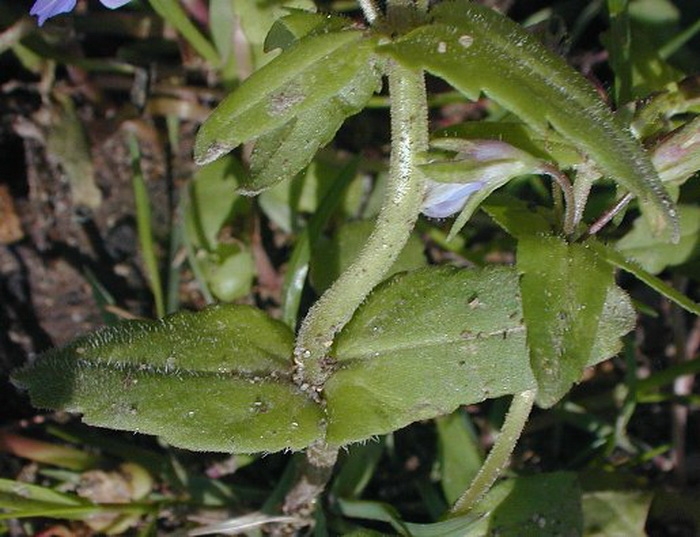
The blooming period occurs from mid- to late spring, lasting about 3 weeks. Afterwards, each flower is replaced by an globoid-ovoid capsule that contains a few large seeds. The root system consists of a slender taproot. This plant spreads by reseeding itself; it often forms colonies of variable size.
Cultivation: The preference is dappled sunlight to light shade, moist to mesic conditions, and a rich loamy soil. The size of individual plants is strongly influenced by moisture conditions and the fertility of the soil. The seeds should be planted during the summer so that they will germinate during the fall.
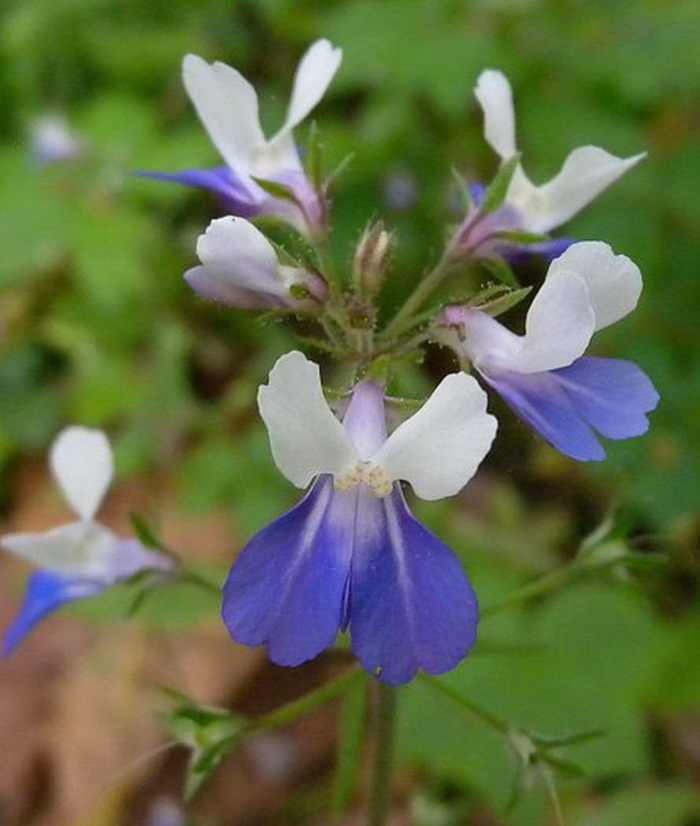
Range & Habitat: Blue-Eyed Mary occurs occasionally in NE and east central Illinois, but it tends to be less common elsewhere (see Distribution Map). At some high quality sites around the state, it is locally abundant. Habitats include moist to mesic deciduous woodlands, wooded lower slopes of river valleys, and areas along woodland paths. Sometimes Blue-Eyed Mary occurs in drier deciduous woodlands, in which case the individual plants will be smaller in size. Even though it tolerates minor levels of disturbance, this wildflower is an indicator species of high quality woodlands.
Faunal Associations: The nectar and pollen of the flowers attract honeybees, bumblebees, little carpenter bees (Ceratina spp.), long-horned bees (Synhalonia spp.), and mason bees (Osmia spp.). Less common flower visitors include dance flies (Empis spp.), the Giant Bee Fly (Bombylius major), butterflies, and skippers. Little else appears to be known about floral-faunal relationships for this species.

Photographic Location: Along a path in a deciduous woodlands at Allerton Park in Piatt County, Illinois, and the wooded lower slope of a river valley at Lodge Park in the same county.
Comments: The distinctive bicolored flowers are very beautiful, making Blue-Eyed Mary easy to identify. This woodland wildflower is unusual in having flowers that are close to a true blue color. The only other species in the genus that has been observed in Illinois is Collinsia violacea (Violet Collinsia). This latter wildflower is also a winter annual that has corollas with a deeper shade of purplish violet and more narrow lanceolate leaves. Violet Collinsia prefers sunnier habitats than Blue-Eyed Mary, and it is quite rare within the state, although more common in the Southern Plains region of the United States.
The central stem terminates in a whorl of 2-6 flowers on slender pedicels up to 1" long. Sometimes individual flowers develop from the axils of the upper leaves as well; these axillary flowers have slender pedicels up to 1½" long. The pedicels are light green, terete, and pubescent. Each flower is ½-¾" across, consisting of a green calyx with 5 teeth and a blue/white corolla. The calyx is light green to purplish green; it is often pubescent and its teeth are narrowly triangular in shape. The corolla is short-tubular and it is divided into upper and lower lips. The upper lip is cleft into 2 large rounded lobes that are white, while the lower lip is cleft into 3 lobes. The 2 large outer lobes of the lower lip are light blue to blue-violet and rounded, while the tiny middle lobe of the lower lip is folded into a keel and hidden from view. This middle lobe contains the stamens and style of the flower.

The blooming period occurs from mid- to late spring, lasting about 3 weeks. Afterwards, each flower is replaced by an globoid-ovoid capsule that contains a few large seeds. The root system consists of a slender taproot. This plant spreads by reseeding itself; it often forms colonies of variable size.
Cultivation: The preference is dappled sunlight to light shade, moist to mesic conditions, and a rich loamy soil. The size of individual plants is strongly influenced by moisture conditions and the fertility of the soil. The seeds should be planted during the summer so that they will germinate during the fall.

Range & Habitat: Blue-Eyed Mary occurs occasionally in NE and east central Illinois, but it tends to be less common elsewhere (see Distribution Map). At some high quality sites around the state, it is locally abundant. Habitats include moist to mesic deciduous woodlands, wooded lower slopes of river valleys, and areas along woodland paths. Sometimes Blue-Eyed Mary occurs in drier deciduous woodlands, in which case the individual plants will be smaller in size. Even though it tolerates minor levels of disturbance, this wildflower is an indicator species of high quality woodlands.
Faunal Associations: The nectar and pollen of the flowers attract honeybees, bumblebees, little carpenter bees (Ceratina spp.), long-horned bees (Synhalonia spp.), and mason bees (Osmia spp.). Less common flower visitors include dance flies (Empis spp.), the Giant Bee Fly (Bombylius major), butterflies, and skippers. Little else appears to be known about floral-faunal relationships for this species.

Photographic Location: Along a path in a deciduous woodlands at Allerton Park in Piatt County, Illinois, and the wooded lower slope of a river valley at Lodge Park in the same county.
Comments: The distinctive bicolored flowers are very beautiful, making Blue-Eyed Mary easy to identify. This woodland wildflower is unusual in having flowers that are close to a true blue color. The only other species in the genus that has been observed in Illinois is Collinsia violacea (Violet Collinsia). This latter wildflower is also a winter annual that has corollas with a deeper shade of purplish violet and more narrow lanceolate leaves. Violet Collinsia prefers sunnier habitats than Blue-Eyed Mary, and it is quite rare within the state, although more common in the Southern Plains region of the United States.
1
0
文章
Miss Chen
2018年05月04日

Description: This perennial wildflower is 4-12" tall and unbranched, except for possibly 1-2 flowering side stems near the apex. The erect central stem is light green to purplish green, terete, and hairy. At the base of each plant, 1-2 basal leaves are commonly present; they are about 1" long and across,Close-up of Flowers cordate-orbicular, and bluntly dentate or undulate along their margins. Each basal leaf has a long slender petiole. The alternate leaves are up to 2" long and 1" across; they are oval-ovate to oblong, bluntly dentate or undulate along the margins, and ciliate. At the base, the alternate leaves are sessile or slightly clasp the central stem. The alternate leaves become slightly shorter and more narrow as they ascend the stem. The central stem terminates in a raceme of flowers. The flowers and buds are concentrated toward the apex of the raceme, while cylindrical seedpods (siliques) develop along the remainder of the raceme. Each flower is about ½–¾" across, consisting of 4 petals, 4 sepals, several stamens, and a single stout style of the pistil. The petals are pale purple or purple-tinted white and obovate in shape. The sepals are purple, hairy, and membranous-white along their margins. The petals are much longer than the sepals. The blooming occurs during mid-spring and lasts about 2 weeks. The flowers are fragrant. Each flower is replaced by an ascending silique up to 1" long. The 2-valved siliques are green to purple; each silique contains a single row of seeds and it has a stout pedicel up to 1" long at its base. Eventually, the silique splits in half lengthwise to release the seeds. The root system is fibrous and tuberous.
Cultivation: This wildflower develops early during the spring when it receives dappled sunlight from its location underneath deciduous trees. It likes an evenly moist site with fertile loamy soil and abundant leaf mold. By the beginning of summer, it has already died down and released its seeds.
Range & Habitat: The native Purple Cress is occasional in NE and east central Illinois, but it is rare or absent elsewhere in the state (see Distribution Map). Habitats include moist deciduous woodlands, low wooded valleys, and areas along shaded seeps and springs, particularly where limestone comes close to the surface of the ground. This conservative species is normally found where the original ground flora is still intact. It is one of the spring wildflowers in woodlands that is threatened by the spread of Alliaria petiolata (Garlic Mustard).

Faunal Associations: Records about floral-faunal relationships for this species are limited. Insect visitors of the flowers are probably similar to those of a closely related species, Cardamine bulbosa (Spring Cress), which blooms only a little latter and occupies similar habitats. These insects include various kinds of bees (honeybees, mason bees, Andrenid bees, Halictid bees), bee flies (including Bombylius major, the Giant Bee Fly), other miscellaneous flies, and butterflies that appear during the spring. Most of these insects suck nectar from flowers, although some of the bees and flies also seek pollen. An oligolectic flea beetle that prefers woodland habitats, Phyllotreta bipustulata, feeds on the foliage of Purple Cress; it also feeds on the foliage of Dentaria spp. (Toothworts). Mammalian herbivores rarely feed on this wildflower because its foliage is short-lived and unpleasant-tasting (bitter and spicy).
Photographic Location: Along a shaded seep in Vermilion County, Illinois.
Comments: This is another lovely spring wildflower of the woodlands. Purple Cress is similar to Cardamine bulbosa (Spring Cress), except that the latter has flowers with white petals and green sepals. Spring Cress also has a glabrous central stem, while Purple Cress has a hairy stem. In contrast to Dentaria spp. (Toothworts) and many other Cardamine spp. (Bitter Cress species), both of these wildflowers lack compound leaves that are pinnately or palmately divided. Another species of the Mustard family, Iodanthus pinnatifidus (Purple Rocket), produces pale purple flowers on long racemes in damp wooded areas. However, Purple Rocket is a larger plant that blooms later in the year (late spring to mid-summer). Other common names of Cardamine douglassii are Purple Spring Cress and Northern Bitter Cress.
Cultivation: This wildflower develops early during the spring when it receives dappled sunlight from its location underneath deciduous trees. It likes an evenly moist site with fertile loamy soil and abundant leaf mold. By the beginning of summer, it has already died down and released its seeds.
Range & Habitat: The native Purple Cress is occasional in NE and east central Illinois, but it is rare or absent elsewhere in the state (see Distribution Map). Habitats include moist deciduous woodlands, low wooded valleys, and areas along shaded seeps and springs, particularly where limestone comes close to the surface of the ground. This conservative species is normally found where the original ground flora is still intact. It is one of the spring wildflowers in woodlands that is threatened by the spread of Alliaria petiolata (Garlic Mustard).

Faunal Associations: Records about floral-faunal relationships for this species are limited. Insect visitors of the flowers are probably similar to those of a closely related species, Cardamine bulbosa (Spring Cress), which blooms only a little latter and occupies similar habitats. These insects include various kinds of bees (honeybees, mason bees, Andrenid bees, Halictid bees), bee flies (including Bombylius major, the Giant Bee Fly), other miscellaneous flies, and butterflies that appear during the spring. Most of these insects suck nectar from flowers, although some of the bees and flies also seek pollen. An oligolectic flea beetle that prefers woodland habitats, Phyllotreta bipustulata, feeds on the foliage of Purple Cress; it also feeds on the foliage of Dentaria spp. (Toothworts). Mammalian herbivores rarely feed on this wildflower because its foliage is short-lived and unpleasant-tasting (bitter and spicy).
Photographic Location: Along a shaded seep in Vermilion County, Illinois.
Comments: This is another lovely spring wildflower of the woodlands. Purple Cress is similar to Cardamine bulbosa (Spring Cress), except that the latter has flowers with white petals and green sepals. Spring Cress also has a glabrous central stem, while Purple Cress has a hairy stem. In contrast to Dentaria spp. (Toothworts) and many other Cardamine spp. (Bitter Cress species), both of these wildflowers lack compound leaves that are pinnately or palmately divided. Another species of the Mustard family, Iodanthus pinnatifidus (Purple Rocket), produces pale purple flowers on long racemes in damp wooded areas. However, Purple Rocket is a larger plant that blooms later in the year (late spring to mid-summer). Other common names of Cardamine douglassii are Purple Spring Cress and Northern Bitter Cress.
0
0
文章
权问薇
2018年05月03日


一、花期
这种花一般是在六到九月份的时候开始长出来更多茂密的花,但是要是养护的非常好的话,可以把它长花的时间从5月份开始延长到12月份。

二、办法
1、修剪
每一年的三四月份的时候,它的新的枝都会逐渐的萌生出来,然后在它的盆的上面十㎝左右的区域,将上面的枝给全部的去掉,可以让它新生出来更多的新的枝。这样,在五月份的时候它的花就可以新生出来。
2、加肥
第一,在它的花谢掉了以后,把它老掉的花的梗给去掉,并且给它把土给松松,并且在它长花的时候它花费了很多的养分,应当要在它的花凋谢之后给它加一些剂量比较少的肥,这样等到八九月份,它就又可以长出来新的花。第二,在它的第二次长花之后,又按照上面的方法给它把枝给去掉,把土给松一下,并且给它加肥,等到十二月份就又可以长出来新的花了。

三、日常照料
1、控制高度
第一,为了让它的形态更加的好看,应当要给它把高度给控制好,否则它的枝会长得很长,可以给它进行摘心。第二,为了让它的形态更加的丰满,在它长花之后还应该给它重复的修剪。
2、固定形态
第一,因为这种花是属于藤本类的植物,为了不让它的茎非常的杂乱,应该要在它还是小苗的时候给它培养一根十厘米左右的蔓条。然后把它身上多余的茎给去掉。第二,然后用一个圆形的拍子把它的主蔓给固定住,然后把其他的枝扎在拍子上面,让它们在拍子上成长。等到拍子上长满了枝条以后给它进行摘心,让它的养料集中在要长花的枝上。
0
0
文章
Miss Chen
2018年05月02日

Close-up of FlowerDescription: This herbaceous perennial plant is 4-12" tall, consisting of a short stem that branches at ground level into 2 basal leaves with long petioles. The basal leaves are up to 3" long and 4" across. They are cordate-orbicular, deeply indented at the base, and have smooth margins. Their upper surface is slightly hairy and shiny. From the axil of a pair of leaves, develops a single reddish brown flower on a short stalk. Both the flowering stalk and the petioles of the leaves are covered with white hairs that are long and twisted. The flower is about 1" across; it has 3 calyx lobes that are triangular in shape and curl backward. The thick tubular base of calyx is divided into 6 rounded chambers (3 primary chambers, which are each divided into 2 secondary chambers). These chambers contain the ovaries, which develop into rows of seeds. The tubular base of the calyx is light reddish brown and covered with long white hairs. There is a stout column of reproductive organs at the throat of the flower, which is reddish brown like the lobes. It is surrounded by the inner surface of the calyx, which is white. The blooming period occurs from mid- to late spring, and lasts about 3 weeks. After the flowers wither away, the seed capsule splits open to release the seeds. These seeds have a fleshy appendage. The root system consists of shallow rhizomes that are fleshy and branching. This plant often forms vegetative colonies.
Cultivation: The preference is light shade and moist to slightly dry conditions. The soil should be rich and loamy, although some rocky material underneath the soil surface is acceptable.
Range & Habitat: The native Wild Ginger is a common plant that can be found in most counties of Illinois (see Distribution Map). Habitats include moist to slightly dry deciduous woodlands (both floodplain and upland), and bluffs. It often found along ravines and slopes.
Faunal Associations: The reddish brown flowers probably attract flies or beetles as pollinating agents. The seeds attract ants because of their fleshy appendages; these insects help to disperse the seeds. The toxic foliage is not eaten by mammalian herbivores.

Photographic Location: The edge of a wooded bluff at Kickapoo State Park in Vermilion County, Illinois, where this plant is quite common. The foliage in the upper left corner of the photograph of the basal leaves is Dentaria laciniata (Cutleaf Toothwort).
Comments: This plant is called 'Wild Ginger' because the aromatic rhizomes have a ginger-like fragrance and flavor. Fresh or dried, they can be used as a substitute for the spice. Different varieties of Wild Ginger have been described by different authorities, which vary according to the length of the calyx lobes, and whether they are spreading or reflexed. The variety that is described here, Asarum canadense reflexum, is the most common variety of Wild Ginger in Illinois.
Cultivation: The preference is light shade and moist to slightly dry conditions. The soil should be rich and loamy, although some rocky material underneath the soil surface is acceptable.
Range & Habitat: The native Wild Ginger is a common plant that can be found in most counties of Illinois (see Distribution Map). Habitats include moist to slightly dry deciduous woodlands (both floodplain and upland), and bluffs. It often found along ravines and slopes.
Faunal Associations: The reddish brown flowers probably attract flies or beetles as pollinating agents. The seeds attract ants because of their fleshy appendages; these insects help to disperse the seeds. The toxic foliage is not eaten by mammalian herbivores.

Photographic Location: The edge of a wooded bluff at Kickapoo State Park in Vermilion County, Illinois, where this plant is quite common. The foliage in the upper left corner of the photograph of the basal leaves is Dentaria laciniata (Cutleaf Toothwort).
Comments: This plant is called 'Wild Ginger' because the aromatic rhizomes have a ginger-like fragrance and flavor. Fresh or dried, they can be used as a substitute for the spice. Different varieties of Wild Ginger have been described by different authorities, which vary according to the length of the calyx lobes, and whether they are spreading or reflexed. The variety that is described here, Asarum canadense reflexum, is the most common variety of Wild Ginger in Illinois.
0
0







